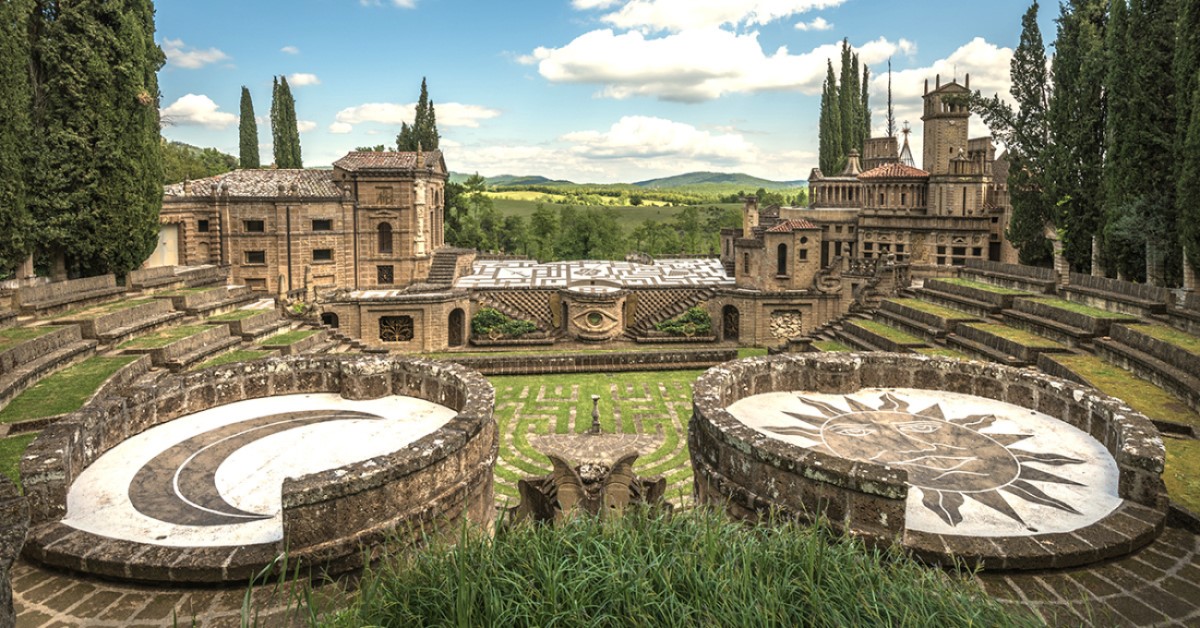La Scarzuola, Italy: Off The Beaten Path
A surreal and magical place, with hidden chambers and mysterious symbolism, La Scarzuola is a fairytale convent with an evocative atmosphere. From extravagant mosaics to looming gargoyles and the all-seeing-eye, this 16th century monastery-turned-haunting-wonderland is characterized by an astronomical and labyrinthine feel.
According to medieval chronicles, this is the place where Saint Francis of Assisi planted a rose and a laurel; miraculously, a fountain sprung up and flowed. Saint Francis built himself a hut at the spot in 1218, and the counts of Marsciano later constructed a church and convent complex in its place as a remembrance of the miracle.
In 1956, the complex was bought by milan architect Tomaso Buzzi and transformed it into his idea of an “ideal city.” Apparently inspired by Francesco Colonna’s romantic story, “Hypnerotomachia Poliphili,” the architectural style best associated with La Scarzuola is neo-mannerism; the use of stairs in various directions, the deliberate disproportion of some structures, the heaping together of buildings and monuments, they all point to his bizarre and slightly idealistic vision. With 7 theaters and an eccentric design, this “lay city” was quite the contrast to the “holy city” adjacent to it.
A sort of “autobiography in stone,” La Scarzuola is a physical reflection of Buzzi’s philosophical inner life as well as an interpretation of the unconscious mind. A modge-podge of familiar monuments (Arc de Triomphe, Parthenon, etc) are intertwined with dark symbolism in layers of structures and winding corridors, all paralleling and defying the church convent next door. As a real eschatological allegory of existence, La Scarzuola is worth traveling to Italy’s Umbria region for.
Featured image: © Javarman | Dreamstime.com


